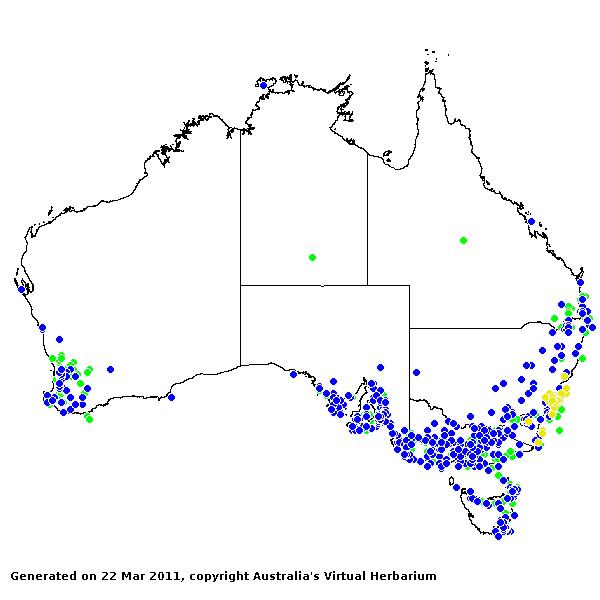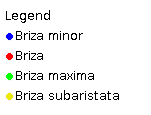Briza* Sp. Pl. 70 (1753).
Derivation:. From Greek brizein (to vibrate), alluding to the nodding spikelets.
Key references (keys and floras):. G.Bentham, Fl. Australiensis 7: 659–660 (1878); C.A.Gardner, Flora of Western Australia 1 Gramineae 128–130 (1952); E.E.Henty, Manual Grasses New Guinea 42 (1969); J.C.Tothill and J.B.Hacker, Grasses of Southern Queensland 138–139 (1983); J.P.Jessop, Flora of South Australia 4: 1887 (1986); B.K.Simon, Key to Australian Grasses 80 (1993); S.W.L.Jacobs and S.M.Hastings, Flora of New South Wales 4: 616–617 (1993); N.G.Walsh, Flora of Victoria 2: 414 (1994); D.I.Morris, Student's Flora of Tasmania 4B: 207–208 (1994); E.Edgar and H.E.Connor, Flora of New Zealand 5: 87–91 (2000); D.Sharp and B.K.Simon, AusGrass (2002); J.P.Jessop, Grasses of South Australia 114–116 (2006); S.W.L.Jacobs, R.D.B.Whalley & D.J.B.Wheeler, Grasses of New South Wales, 4th Ed, 171–172 (2008); A.Wilson (ed.), Flora of Australia 44A: Poaceae 2: 339–342 (2009).
W.D.Clayton & S.A.Renvoize, Genera Graminum (1986), genus (121).
Naturalised. 16 species, from north temperate regions, South America. 3 species in Australia, WA, SA, Qld, NSW, Vic, and Tas. Also New Guinea, Malesia and New Zealand.
Habit. Annual or perennial, rhizomatous or tufted. Leaf blades narrow. Ligule an unfringed membrane.
Inflorescence. Inflorescence paniculate, an open panicle with branches ending in single spikelets, open.
Spikelets. Spikelets laterally compressed, more than 2 flowered, with 2 or more fertile florets, unaccompanied by bractiform involucres, not associated with setiform vestigial branches, pedicelled; with naked rachilla extension. Fertile spikelets disarticulating above glumes.
Glumes. Glumes more or less equal, shorter than spikelet, shorter than adjacent lemmas or long relative to adjacent lemmas, awnless, keeled or non-keeled, similar (broad and cordate, thin and papery). Lower glume 3–15 nerved. Upper glume 3–15 nerved.
Florets. Fertile florets 4–20. Lemmas as broad as long and gibbous, similar in texture to glumes, not becoming indurated, entire at apex or incised (obtuse, cuspidate, bidentate or mucronate), muticous or mucronate (the mucro less than 1.5 mm long), without a germination flap, 7–15 nerved, hairy or glabrous. Palea conspicuous and relatively short, 2 nerved. Distal incomplete florets underdeveloped. Callus short. Lodicules 2. Stamens 3. Grain small, compressed dorsiventrally. Hilum short, or long-linear. Embryo small.
Kranz Anatomy. C3.
2n = 10, 14, and 28, 2 and 4 ploid (and aneuploid), commonly adventive.
Habitat. Mesophytic. On dry to moist soils. Mostly species of open habitats.
Classification. Pooideae; Poeae.
Notes. Briza can usually be recognized by its very broad lemmas whose membranous margins are appressed to the flanks of the floret (Clayton and Renvoize, 1986).
Types Species. B. minor L.
Biogeographic Element. Clifford & Simon 1981, Simon & Jacobs 1990: Naturalised.


